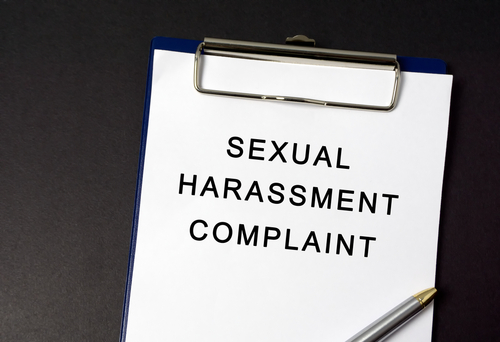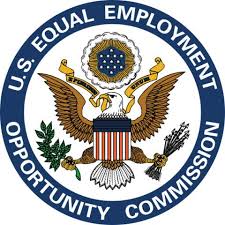
Brad Cave
By Brad Cave
Sexual harassment can affect your workplace in many significant ways—for example, by lowering morale, increasing absenteeism and turnover, and decreasing productivity. But those consequences are often difficult to measure and quantify, making it harder to show how they affect your company’s bottom line. Real dollars and cents in the form of jury awards and settlements with employees who have sued their employers for fostering a hostile work environment are more easily understandable and can be persuasive when you need to justify expenditures designed to reduce harassment in your workplace.
A survey of sexual harassment awards and settlements in cases involving the Equal Employment Opportunity Commission (EEOC) in federal courts within the U.S. 10th Circuit Court of Appeals (which covers Wyoming, Colorado, Kansas, New Mexico, Oklahoma, and Utah) offers insight into how much money can be at stake in sexual harassment lawsuits. In addition to the monetary penalties noted in the chart at the bottom of this article, settlement terms often include numerous nonfinancial requirements, such as providing harassment training to supervisors and employees, updating policies and practices, apologizing in writing to the victimized employee, posting notices in the workplace about employees’ right to be free from harassment, and continued EEOC monitoring of your company’s practices.
And keep in mind that in addition to any financial award or settlement, you will incur the costs associated with defending sexual harassment claims. Not only do the attorneys’ fees add up, but supervisors, HR personnel, and others must take time away from their regular tasks to participate in investigations, depositions, and trial preparation. In short, the ramifications of sexual harassment in the workplace are significant, not only in financial terms but also in terms of distractions to your business operations and lost productivity.
Update your approach to sexual harassment
In its newly released statistics for fiscal year 2018, the EEOC reported a 13.6 percent increase in sexual harassment charges over the previous year and a 50 percent increase in lawsuits that include allegations of sexual harassment. In addition, the EEOC noted that its sexual harassment webpage has seen double the number of visits since the #MeToo movement gained momentum one year ago. As employees become more willing to come forward with harassment complaints and public scrutiny continues to damage companies’ reputations, it’s more important than ever to revisit and update your approach to handling and eliminating sexual harassment in your workplace.
On October 31, the EEOC held a public meeting titled “Revamping Workplace Culture to Prevent Harassment” at its headquarters in Washington, D.C. Stakeholders who spoke at the meeting stressed the need for leadership and accountability throughout the organization when workplace harassment is being addressed. According to EEOC Acting Chair Victoria A. Lipnic, “Over the past year, we have seen far too many examples of significant gaps in both areas. Our witnesses [at this meeting] stressed how both leadership and accountability must also be driven throughout an organization from the line employees, to the supervisors, to the CEO, and to the Board.”
Change your culture
So how does an organization change its culture? It has to come from the top. Company leaders and executives must set the tone by assuring employees that sexual harassment will not be tolerated. No one must be exempt from that zero-tolerance approach, no matter how important the individual is to the organization.
Complaints must be taken seriously, and employees who come forward should be treated with respect. If you find that harassment occurred, you must mete out significant consequences for the perpetrator and provide appropriate remedies for the aggrieved employee. Allegations must not be swept under the rug, and the perpetrator shouldn’t be permitted to hide behind a confidential settlement and continue working at the organization, creating the possibility that he or she may harass others in the future.
Changing your culture also requires executives, managers, and supervisors lead by example. Their actions and behavior must be irreproachable, never crossing the line into potential gray areas of sexual harassment. Yes, that means that folks in positions of power may need to rethink their jokes and refrain from certain types of banter. But never crossing the line will show the rest of the workforce that inappropriate behavior is unacceptable.
Encourage bystander intervention and reporting
Victims of sexual harassment often feel ashamed or traumatized, leaving them unable or unwilling to report what happened to them. One way to ensure that workplace incidents get reported is to make it every employee’s responsibility to report what they see and hear at the workplace. Tell employees that they are expected to come forward with any inappropriate conduct they witness or become aware of. Include that expectation in your harassment policy, and make sure you have reporting mechanisms to handle reports from bystanders and witnesses.
Another method of involving employees who witness unlawful harassment is to teach bystander intervention techniques. For example, if an employee sees a coworker being inappropriately touched, she may intervene by getting the coworker out of the area and away from the situation. Inventing a meeting the victim must attend or a phone call she needs to take can be a way to defuse the situation. Bystanders need not (and should not) put themselves in harm’s way when they intervene, but the presence of an additional person is often all that’s needed to break up a harmful scenario.
Make harassment training personal and relevant
Many organizations offer their employees harassment training on a regular basis, often annually. But as time passes, the training may become dull, or it may only be offered online, which means employees might multitask during the training or tune it out altogether.
In-person training can go a long way toward getting employees to take workplace harassment seriously. When employees are allowed to interact with the trainer and each other, the concepts often sink in better, and clarifications that may not be possible with online training can be made. Training should involve harassment scenarios that help employees understand the type of conduct that’s unacceptable. It also should cover your policies, reporting mechanisms, and the consequences for violations.
Consider bringing in outside trainers to keep the content fresh. And remember to include leaders in your training to show that they take the issue seriously, helping to reinforce your antiharassment culture.
Make an anonymous hotline available
Consider setting up an 800 number or using a hotline service that allows employees to report potential harassment or workplace misconduct 24/7. The hotline need not be staffed as long as it permits employees to leave a message. Hotlines can be an additional reporting mechanism that feels less threatening or embarrassing to victims.
Why offer so many reporting avenues, including anonymous reporting? Because you can do something about workplace harassment only if you know it’s occurring. Reports of allegedly inappropriate behavior should trigger a prompt and thorough investigation. If you discover that inappropriate conduct occurred, take steps to stop it from happening again, including terminating the person responsible. You cannot have a zero-tolerance policy if you let harassment continue or allow employees to “get away with it.”
Avoiding liability for harassment is worth changing your practices
With sexual harassment settlements topping six and even seven figures, it’s definitely worth your while to update your approach to handling and preventing workplace harassment. Companies that continue to do what they’ve always done, refusing to change in the #MeToo environment, will find themselves in court—or, perhaps worse, in the news. But updating your approach and changing your culture to show employees that your organization won’t tolerate sexual harassment will keep you from having to write those big settlement checks.
| Plaintiff and description of defendant |
Claims and statutes at issue |
Damages, settlement amount, or other relief |
| EEOC v. hospitality company (District of Colorado, 2016) |
Claims:
• Sexual harassment (hostile work environment)
• Retaliation |
Settlement. $1,020,000 |
| |
|
|
| EEOC v. packing company (District of Colorado 2015) |
Claims:
• Sexual harassment (hostile work environment)
• Retaliation |
Settlement. $450,000 |
| EEOC v. retail meat company (District of Colorado 2015) |
Claims:
• Sexual harassment (hostile work environment)
• Retaliation |
Settlement. $370,000 split between 21 women
|
| EEOC v. bakery (District of New Mexico 2013) |
Claims:
• Sexual harassment (hostile work environment)
• Gender discrimination |
Settlement. $220,000 split between 19 women |
| EEOC v. restaurant group (District of New Mexico 2012) |
Claims:
• Sexual harassment (hostile work environment) |
Settlement. $1,000,000 |
| EEOC v. automotive group (District of Colorado 2012) |
Claims:
• Sexual harassment (hostile work environment)
• Retaliation |
Settlement. $50,000
|
| EEOC v. pest control company (District of Utah 2011)
|
Claims:
• Sexual harassment (hostile work environment) |
Settlement. $160,000 split between class of female employees |
| EEOC v. corrections company (District of Colorado 2009) |
Claims:
• Sexual harassment (hostile work environment)
• Retaliation |
Settlement. $1,300,000 to plaintiff, plus $140,000 in attorney’s fees and costs |
| EEOC v. auto dealership (District of Colorado 2007) |
Claims:
• Sexual harassment (hostile work environment)
• Retaliation
• Gender discrimination |
Settlement. $12,500 split between four female employees |
















 By
By